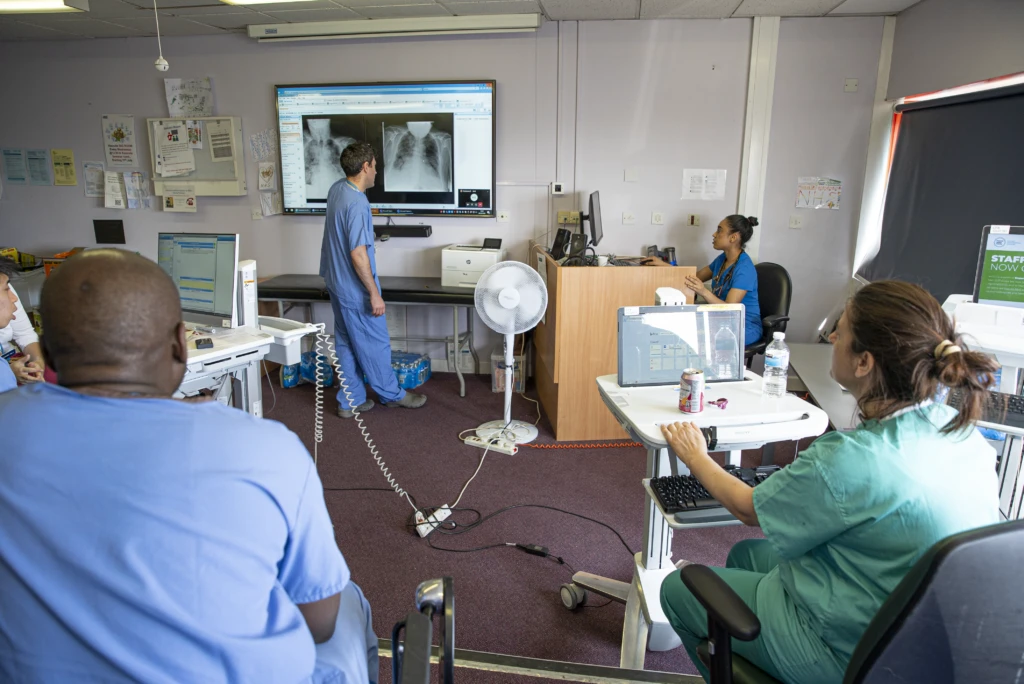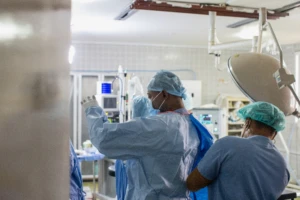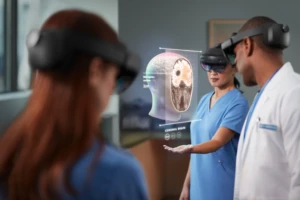
Measuring patient and clinical effectiveness
 This is a part of a series of posts about how the HoloLens and Dynamics 365 Remote Assist helps the NHS provide patient care. See the other blog posts here.
This is a part of a series of posts about how the HoloLens and Dynamics 365 Remote Assist helps the NHS provide patient care. See the other blog posts here.
Partnering with Imperial College Healthcare NHS Trust has been particularly helpful for us to establish patient and clinical effectiveness for the HoloLens 2 and Dynamics 365 Remote Assist. It is a Top 10 global university committed to research excellence and operates five hospitals in London with 11,000 staff.
In addition to helping to define the use cases, the team has helped to establish measurement approaches. These approaches have been used to support as we started to engage other NHS Trusts.
It’s important to recognise that this still at the beginning and early days but an important step forward.
Initial use case focus for measuring effectiveness
The previous blog looked at defining and implementing Dynamics 365 Remote Assist use cases. Therefore, I’m keen to reiterate the specific use cases that Imperial initially focussed on:
- Remote ward rounds to reduce COVID-19 exposure and PPE use: Rather than having multiple doctors and nurses pushing a computer around as they make decisions about patients, the Imperial team could send one physician wearing HoloLens. This means they can reduce the amount of doctors and nurses needed for single rounds whilst reducing the amount of PPE used.
- Reduce contact: The doctor wearing the HoloLens no longer needed to touch a computer. This lessens the risk of unwittingly transmitting the virus and reduces the amount of extra cleaning or computer-specific protection equipment.
- Increase access to patient information: With HoloLens you can remotely talk to team members or doctors, at the patient’s bedside without them physically being in the same room. You can see and interact with any of that patient information virtually so you don’t need to touch anything. You can even interact and manipulate those images in a heads-up view next to the patient.
Study methodology
 To measure patient and clinical effectiveness, the Imperial team collected data pertaining to the key outcomes of patient’s safety, time exposed to COVID-19 positive environments, and PPE use. They have also collected qualitative data from staff related to how easy the technology is to use, and the perceived impact on care quality, communication and teamwork.
To measure patient and clinical effectiveness, the Imperial team collected data pertaining to the key outcomes of patient’s safety, time exposed to COVID-19 positive environments, and PPE use. They have also collected qualitative data from staff related to how easy the technology is to use, and the perceived impact on care quality, communication and teamwork.
The Imperial team has recently submitted their research for peer-review. Here are their preliminary findings:
- The HoloLens 2 reduces staff numbers per ward round by around 66 percent to 83 percent (depending on the environment).
- This equates to saving of 50.4 – 55.4 hrs of ward staff time per week.
- Savings in PPE ranged from 106 to 420 sets per ward per week.
- Staff felt the HoloLens 2 significantly improved communication for the sickest patients.
There is also significant opportunities to measure process improvements. This includes operational efficiencies. In some cases, Imperial are seeing a 30 percent reduction in the time that it takes to do ward rounds. This saves on travel time and many other factors that are important to measure.
What do the staff think?
 Dr Louis Koizia, consultant physician and geriatrician at Imperial, has been one of the doctors using the HoloLens 2 daily since March. At the beginning of March, he did not think the HoloLens 2 would become an everyday tool. However, within four weeks of using HoloLens 2 and Dynamics 365 Remote Assist, he saw the significant improvements it was making. One of his biggest concerns was around whether it would be easy and comfortable to enable daily use.
Dr Louis Koizia, consultant physician and geriatrician at Imperial, has been one of the doctors using the HoloLens 2 daily since March. At the beginning of March, he did not think the HoloLens 2 would become an everyday tool. However, within four weeks of using HoloLens 2 and Dynamics 365 Remote Assist, he saw the significant improvements it was making. One of his biggest concerns was around whether it would be easy and comfortable to enable daily use.
“If you can ask me now, I can’t imagine going back to my old style ward rounds and we are only two months into it,” Dr Koizia said. “We are only using the technology at such a basic level with HoloLens 2 and Dynamics 365 Remote Assist as we needed it to work ‘out of the box’ and we needed it to do a job. It’s done that fantastically. I’m excited about what we are going to develop out and I’m certain that in a year or two’s time these will be used mainstream throughout the country.”
Improving patient care
It’s also important to take into account the input from patients and feedback has been quite positive.
Dr Koizia said patients are very used to seeing healthcare staff with PPE, gloves, masks and visors. So wearing the HoloLens 2 has been quite a natural addition. Explaining to patients why they are using the HoloLens 2, what the physician sees, but also what the team of healthcare professionals can see virtually is a very important part of the process. This has resulted in positive feedback from patients. They have a team of healthcare professionals working with them, while also ensuring that they themselves aren’t exposing staff.
Within Alder Hey, the team has been sensitive to ensure they get feedback from both the children and parents. Their findings have been that the children did not find the HoloLens 2 scary, and the parents were welcoming to the prompt adoption of technology. The doctors and nurses felt that patient care was more focussed as they were not distracted by other ward activities and traffic. Also, it has the advantage of relevant investigations instantaneously being shared between the teams.
“It just seems quite a good thing that you can have all those amount of people in the same room, in one person, when this contagious thing, that no-one knows the beginnings or the ends of it. They’re not only saving me, I’m not passing anything onto any one of them and their friends,” John, a patient at Imperial told BBC at 6.
Another patient was asked by The Economist whether it felt like it was technology that was diagnosing them or a person. “Always felt like a person, a whole group of doctors standing there in front of me, while there was only one person and they had more input because they had all of the data in front of them with the computer screens.”
What’s next
Next, they will publish the peer reviewed research on the patient and clinical effectiveness of the HoloLens 2 and Dynamics 365 Remote Assist. We also know that there is a lot more to do in this area. In the next blog, we’ll talk about how the team is thinking about what’s next and how can other NHS Trusts get involved.
Find out more
How HoloLens and Dynamics 365 Remote Assist helps the NHS provide patient care
Defining and implementing Dynamics 365 Remote Assist use cases
What’s next: How can other NHS Trusts get involved?
What technology was needed to get started
About the author
 Leila has been working on the commercial mixed reality business for the last five years and is based in the UK. She’s been working with some of the most advanced customers and partners in the world, helping them identify, pilot and deploy technologies that have a profound ability to transform their business.
Leila has been working on the commercial mixed reality business for the last five years and is based in the UK. She’s been working with some of the most advanced customers and partners in the world, helping them identify, pilot and deploy technologies that have a profound ability to transform their business.
Prior to joining the mixed reality team, she held several senior positions at Microsoft including leading consumer and commercial business units such as Server & Tools and Windows in the UK and Central & Eastern Europe.




